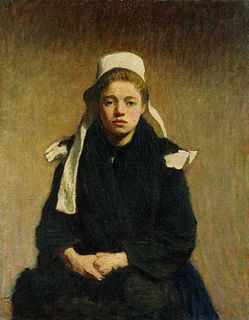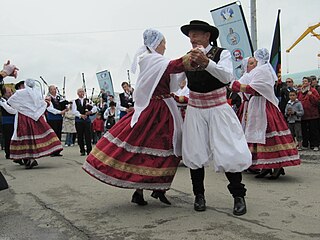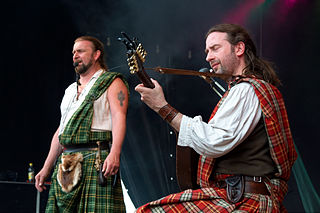
Celtic music is a broad grouping of music genres that evolved out of the folk music traditions of the Celtic people of Western Europe. It refers to both orally-transmitted traditional music and recorded music and the styles vary considerably to include everything from "trad" (traditional) music to a wide range of hybrids.
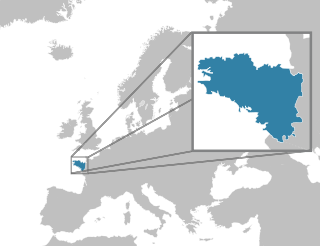
Brittany is a cultural region in the northwest of France, covering the western part of what was known as Armorica during the period of Roman occupation. It became an independent kingdom and then a duchy before being united with the Kingdom of France in 1532 as a province governed as if it were a separate nation under the crown.

The modern Celts are a related group of ethnicities who share similar Celtic languages, cultures and artistic histories, and who live in or descend from one of the regions on the western extremities of Europe populated by the Celts.
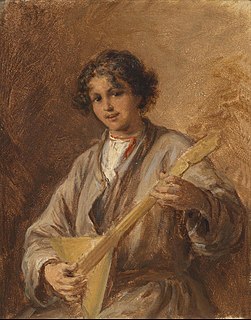
Russian traditional music specifically deals with the folk music traditions of the ethnic Russian people. It does not include the various forms of art music, which in Russia often contains folk melodies and folk elements or music of other ethnic groups living in Russia.

A Fest Noz is a Breton traditional festival, with dancing in groups and live musicians playing acoustic instruments.
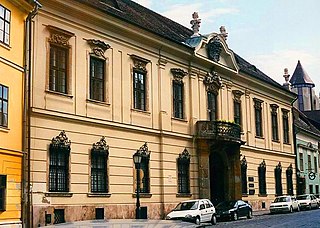
Budapest is the capital and largest city of Hungary; it has long been an important part of the music of Hungary. Budapest's music history has included the composers Franz Liszt, Ernő Dohnányi, Zoltán Kodály and Béla Bartók and the opera composer Ferenc Erkel.
The Culture of Brittany is made up of Breton culture, and Celtic culture. Brittany's strongest international connections tend to be in the United Kingdom, particularly in the Celtic groups of Cornwall and Wales, and in Canada.

The Festival Interceltique de Lorient (French), Gouelioù Etrekeltiek An Oriant (Breton) or Inter-Celtic Festival of Lorient in English, is an annual Celtic festival, located in the city of Lorient, Brittany, France. It was founded in 1971 by Polig Montjarret.
Celtic Colours International Festival is a Celtic music festival held annually in October in communities all over Cape Breton Island in Nova Scotia, Canada. First held in 1997, the festival has featured hundreds of musicians from all over the Celtic world and attracted tens of thousands of visitors to Cape Breton Island. For nine days in October, Cape Breton Island is home to a unique celebration of music and culture as the Celtic Colours International Festival presents dozens of concerts all over the island, an extensive line-up of workshops, a visual art series of exhibitions, and a nightly Festival Club. Over the years, artists have traveled from Scotland, Ireland, Wales, England, Brittany, Spain, Denmark, Germany, Norway, Cuba and Sweden as well as from across the United States and Canada.
Pol-Art is a Polish cultural event held in the State capital cities around Australia. The last event took place between 28 December 2015 and 5 January 2016 and was held in Melbourne, Victoria. Brisbane hosts the next Pol-Art from 27 December 2018 to 06 January 2019.
AberFest is a Celtic cultural festival celebrating all things Cornish and Breton that takes place every second year in Cornwall, UK, around Easter. The AberFest Festival alternates with the Breizh – Kernow Festival which is held in Brandivy or Bignan in Brittany, alternating between those two Breton locations.
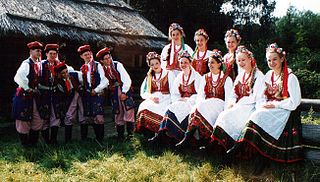
Polish folk dance is a tradition rooted in many centuries of Polish culture. Many of the dances stem from traditions or historical events, but also include ballroom and ballet style elements. Nowadays, they are typically danced by small companies on major holidays and events.
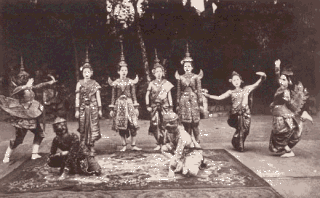
Theatre of Cambodia known as Lakhon is composed of many different genres. There are three main categories: classical, folk, and modern. Many forms of theatre in Cambodia incorporates dance movement into performances and are referred to as dance dramas.

Czech folklore is the folk tradition which has developed among the Czech people over a number of centuries. Czech folklore was influenced by a mix of Christian and pagan customs. Nowadays it is preserved and kept alive by various folklore ensembles uniting members of all ages, from children to seniors, showing their talent during competitions, folklore festivals or other performances.

War'l Leur is a confederacy of Celtic circles established in late 1967. Other confederacy in Brittany is Kendalc'h. The association gathers a large number of groups of Breton traditional dance which propose, in particular in summer, shows and animations throughout the Brittany region but also elsewhere in France, Europe and abroad.

